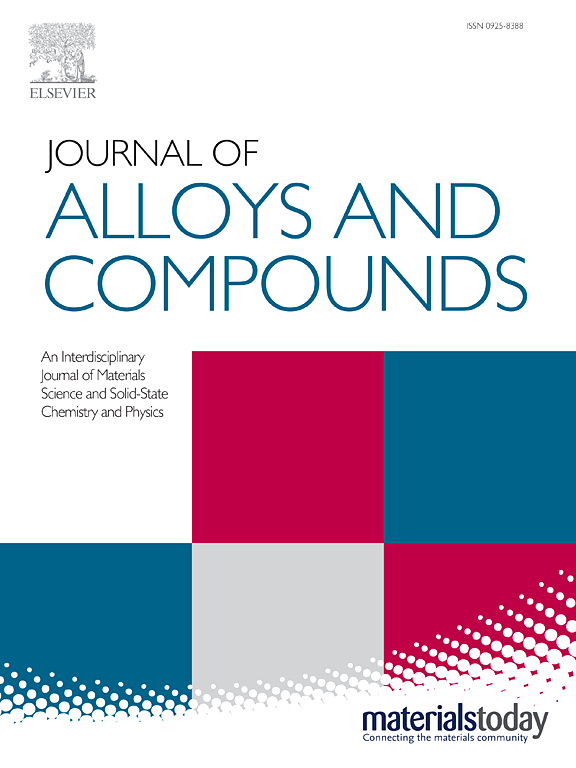Interfacial engineering of RuO2/CoOOH heterojunction for efficient oxygen evolution reaction
IF 6.3
2区 材料科学
Q2 CHEMISTRY, PHYSICAL
引用次数: 0
Abstract
Rational design and construction of low-cost and efficient catalysts with robust structures are significant toward oxygen evolution reaction (OER), but their scalable synthesis remains a grand challenge. Herein, we report a combustion-assisted strategy for in situ growth of a RuO2/CoOOH heterojunction on cobalt foam, which can serve as both metal source and catalyst support. This simple route is favorable to large-scale industrial applications for hydrogen production in the future. Due to the synergistic effect of catalytically active phases, abundant heterointerfaces, and 3D porous structures, the targeted catalyst shows outstanding catalytic OER performance with a lower overpotential of 190 mV to reach a current density of 10 mA cm−2, smaller Tafel slope of 47.5 mV dec−1, and long-term durability for 50 h in 1.0 M KOH solution. When assembled as the anode toward full water splitting, the electrolyzer is capable of offering 10 mA cm−2 at a cell voltage of 1.47 V along with remarkable operational stability. Moreover, the device can be powered by a 1.5 V AA battery, wind, and solar energies, respectively. This work offers a feasible, rapid, and scalable approach for fabricating efficient robust catalysts for oxygen electrocatalysis.

用于高效析氧反应的RuO2/CoOOH异质结界面工程
合理设计和构建低成本、高效且结构坚固的催化剂对析氧反应(OER)具有重要意义,但其规模化合成仍然是一个巨大的挑战。在此,我们报告了一种燃烧辅助策略,用于在钴泡沫上原位生长RuO2/CoOOH异质结,该异质结既可以作为金属源又可以作为催化剂载体。这条简单的路线有利于未来氢气生产的大规模工业应用。由于催化活性相、丰富的异界面和三维多孔结构的协同作用,目标催化剂表现出优异的OER催化性能,其过电位为190 mV,电流密度为10 mA cm−2,Tafel斜率为47.5 mV dec−1,在1.0 M KOH溶液中具有50 h的长期耐久性。当作为阳极组装到完全水分解时,电解槽能够在1.47 V的电池电压下提供10 mA cm−2,并具有显着的运行稳定性。此外,该装置可以分别由1.5 V的AA电池、风能和太阳能供电。这项工作为制造高效的氧电催化催化剂提供了一种可行、快速、可扩展的方法。
本文章由计算机程序翻译,如有差异,请以英文原文为准。
求助全文
约1分钟内获得全文
求助全文
来源期刊

Journal of Alloys and Compounds
工程技术-材料科学:综合
CiteScore
11.10
自引率
14.50%
发文量
5146
审稿时长
67 days
期刊介绍:
The Journal of Alloys and Compounds is intended to serve as an international medium for the publication of work on solid materials comprising compounds as well as alloys. Its great strength lies in the diversity of discipline which it encompasses, drawing together results from materials science, solid-state chemistry and physics.
 求助内容:
求助内容: 应助结果提醒方式:
应助结果提醒方式:


